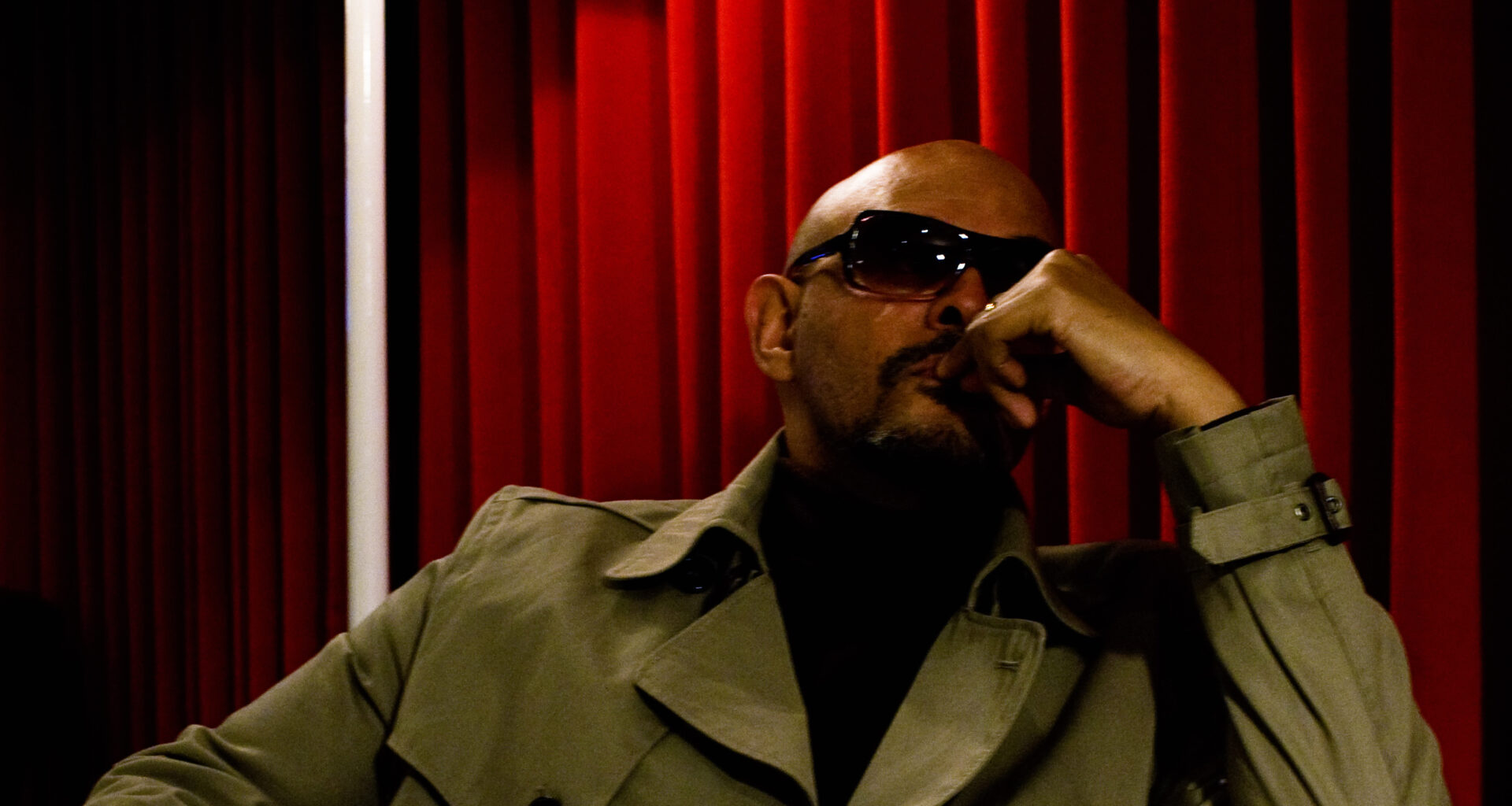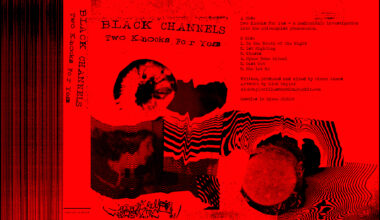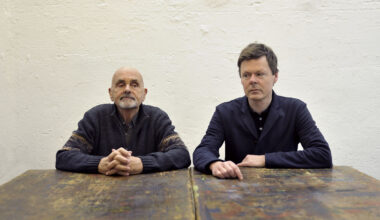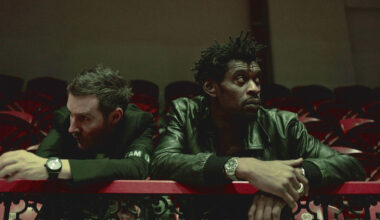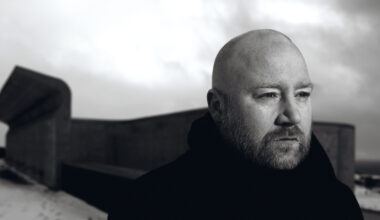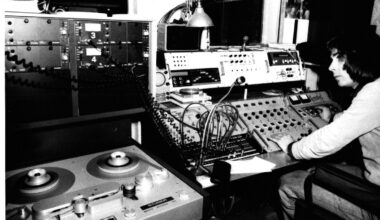From his days as the bass player in Magazine, to conjuring up imaginary soundtracks, to directing films in his own right, Barry Adamson talks us through an extraordinary career. And with a new solo album, ‘Know Where To Run’, he shows little sign of letting up
A potent mix of punk attitude, jazz style, electronic sounds and dry Mancunian wit, Barry Adamson likes to call himself “the outsider’s outsider”, and he is only half joking. Originally the self-taught bass guitar maestro with a string of cult bands, the 58-year-old multi-instrumentalist has carved a unique solo career over the last three decades that combines movie soundtrack homages, burbling electronica, avant-garde noise-rock and cocktail-jazz crooning, with occasional digressions into photography and film directing.
Barry Adamson’s latest album, ‘Know Where To Run’, is a rich sonic travelogue loaded with rasping murder ballads, cinematic soundscapes and postcards from the darklands. Accompanied by a lavish photo book, the album was conceived as a “movie mixtape” that tracks a journey across the altered states of America. It is a heady and exotic brew. And yet, judged against Adamson’s canon of work, it feels almost conventional, with classic songwriting nestled between gnarly blues-punk and brooding progtronica.
“A lot of my ideas at the beginning were quite experimental, I wanted to be abstract and slightly weird,” Adamson says. “I guess it’s grown from the well of experimental dissonance into something that is more honed and a quite classic approach to writing. That’s the only journey I’m on. And I do have that thing of trying to write something that will stick, something universal. Which I didn’t really think was in me at the beginning, as a child, but I guess it was always there.”
Although Adamson’s time-warping music comes sharply dressed in stylised retro clothes, his recording methods are heavily modern, digital and electronic. He even composed four or five tracks for ‘Know Where To Run’ on a phone app while he was touring, later downloading them to his studio computer.
“I like to keep up with technology,” he says. “Some people run to the hills from it, but I like to mix it up. What’s going on there? Could that be an aid…?”
The album’s deceptively analogue sound is actually “mainly electronic,” Adamson explains.
“I’m trying to use the idea of cinema magic, if you like. Making stuff that comes from organic sources, or it might come from a computer as well, and then I might put some of it onto analogue tape or through an analogue desk, and give it some of that old feel back. At the end of the day, I want it to sound like something that was made now, but has everything in it from the history of music from 1958 onwards. Since I was born, if you like. There is a whole reservoir of electronic stuff now which sounds acoustic or organic. It’s not just a synthesiser any more.”
Born and raised in Manchester but currently based in Brighton, Adamson has his own studio and his own label, Central Control International, which allows him a rare degree of autonomy. An album session typically begins and ends with him manipulating sounds in his studio, mixing live instruments with loops and samples. His regular team of musicians come in to play midway through, but the final product is very much a solo vision.
“I guess that is where the filmic bit comes in, because I am like a director there,” he says. “I sift through all the takes and then craft it into what I was trying to get at in the first place. It is like being the writer, director, editor and all the rest of it. I’m an auteur composer. Control freak of the week.”
This kind of single-minded self-belief has been an important thread throughout Adamson’s career. Born to a black father and white mother in the racially mixed Moss Side area of Manchester, he served his musical apprenticeship during the city’s hugely fertile punk boom. His subsequent career trajectory is almost a textbook study in punk’s do-it-yourself ethos. He recalls late 1970s Manchester as very much like the desolate kitchen-sink city depicted in Anton Corbijn’s Joy Division biopic ‘Control’: monochrome streets, monosyllabic conversations, blunt northern humour.
Adamson may have left Manchester at the end of his teens, but he still feels a close connection.
“There’s always a part of me from there,” he nods. “The humour has been embedded in me from childhood, all that stuff is still there, and I love that. I love going to Manchester and just walking around, listening to people. I’m home as soon as I hear it. That will never leave me.”
After leaving school, Adamson gave up a graphic design course at Stockport Art College to join former Buzzcocks singer Howard Devoto’s post-punk band Magazine, teaching himself to play rudimentary bass guitar the night before his audition. Within a few short months he was playing on ‘Top Of The Pops’ as the band’s debut single, ‘Shot By Both Sides’, grazed the Top 40. Sporting a nifty Afro, Adamson looks no older than 14 in the archive video clip readily available on YouTube.
“I was very lucky to be in the right place at the right time,” he recalls. “I was 18 when that record came out, so really on the cusp of wrapping up education and going somewhere else. So I stepped onto it quite easily.”
Adamson relocated to London as Magazine began to enjoy a short-lived pop success, which led him to play bass on other related projects, including Steve Strange’s iconic electro-pop outfit Visage. After Magazine disbanded in 1981, Adamson was invited to join Nick Cave’s chaotic junkie-punk band The Birthday Party just as they dissolved and reconstituted into Nick Cave And The Bad Seeds. He played with Cave for the next five years, finally breaking out solo in 1988.
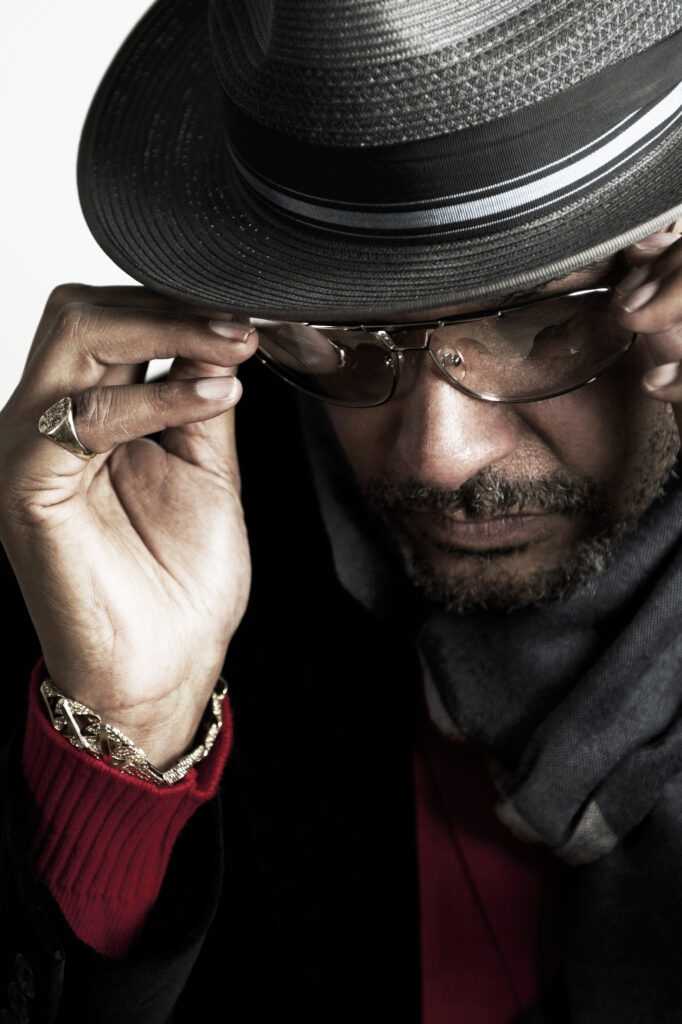
In the director’s chair for the first time, Barry Adamson’s cinematic fascination came to dominate his musical vision. His debut solo EP featured ‘The Man With The Golden Arm’, a cover of Elmer Bernstein’s classic theme for Otto Preminger’s 1955 thriller about a junkie jazz drummer, played by Frank Sinatra. He followed that in 1989 with his first album, ‘Moss Side Story’. The title was a wry cinematic homage to the south Manchester neighbourhood of his youth, the music a swirling symphony of moody jazztronica that combined the gritty texture of vintage hard-boiled Hollywood thrillers with a dash of David Lynch surrealism.
“I guess that’s what I was trying to do with ‘Moss Side Story’,” Adamson says, “the idea that in certain circumstances you can actually hear the images, you don’t need a film, you can actually feel and hear the terror and anticipation. That is what I’m getting at rather than the idea of a soundtrack to a movie that didn’t exist.”
Adamson followed ‘Moss Side Story’ with a string of sonically ambitious albums that plotted a circuitous route from experimental electro-jazz abstraction towards increasingly lyric-based, classic songwriting. Along the way, he picked up a Mercury Music Prize nomination for ‘Soul Murder’ in 1992 and collaborated with a range of artists including avant-rock diva Diamanda Galas, experimental guitar legend Robert Fripp, and Finnish electro minimalists Pan Sonic.
Cinema remains a key recurring thread in Adamson’s solo work. His track titles and musical moods are full of silver screen homages, from Alfred Hitchcock to James Bond, Lalo Schifrin to Quincy Jones, John Barry to Ennio Morricone. He cites as inspiration the vintage Hollywood film noirs based on the hard-boiled pulp novels of Jim Thompson and Dave Goodis, as well as epic underworld sagas like Sergio Leone’s ‘Once Upon A Time In America’. Many of his darkly funny lyrics certainly inhabit a similar nocturnal realm of mean streets, femme fatales and violence lurking in the shadows.
“I’m not a gangster movie obsessive,” he explains, “but I do think it’s a fascinating way to live because it involves all these things like violence and murder and robbery. I’m fascinated by it from a distance, it sounds kind of careless and irresponsible to see it as a style thing, because when I read about stuff that happens today I feel revulsion. When I read that somebody has killed another person, I’m baffled. That’s about as deep as the human experience goes.”
Adamson’s back catalogue also includes pointed titles like ‘A Gentle Man Of Colour’ and ‘The Negro Inside Me’, which address his mixed race heritage from an oblique angle. “Many times I’ve been a victim of racism,” he explains, listing the daily diet of harsh double standards and micro-aggressions, often subtle and unspoken, that are routinely directed at people with darker skin. But he rarely makes polemical points about race in his music.
“No, I don’t, I prefer or make statements about it that work from more of an abstract narrative,” he agrees. “I think these things are really complex. It comes back to the crime world. How does fear motivate you to hate someone else? How does that make you want to enact violence against them? You can find it in the music, it’s dead easy, but it feels a bit strange for me to be saying, ‘Here are my Top 10 incidents of racism’.”
Inevitably, Adamson’s cinematic muse eventually led him into real soundtrack work, contributing tracks to David Lynch’s ‘Lost Highway’, Oliver Stone’s ‘Natural Born Killers’ and Danny Boyle’s ‘The Beach’. But nowadays he is less interested in scoring films than in writing and directing them himself. He has already made two shorts, the decidedly Lynchian missing persons thriller ‘Therapist’ and the moody “golf noir” mystery ‘The Swing, The Hole And The Lie’. And now he has designs on feature directing and is “chipping away” at various scripts between musical projects.
Over the years, Adamson has fallen out of touch with old musical sparring partners, but his past always seemed to catch up with him. Devoto invited him to rejoin Magazine when they temporarily reformed in 2009, and he recently enjoyed a lengthy second chapter working with Nick Cave again. Indeed, ‘Know Where To Run’ partly grew out of his fortuitous reunion with the Bad Seeds. Four years ago, after relocating from London to Brighton with his wife and son, Adamson was surprised to discover he lived within walking distance of Cave.
“Funnily enough, the first week I was here, the phone rang,” he recalls. “It was Nick saying they were going in the studio to make this album and would I come along to do some bass?”
Adamson played bass on the band’s 2013 album ‘Push The Sky Away’. He then toured the world with them, taking over on drums from an injured Thomas Wydler. After Wydler returned, he switched to keyboards and vibraphone. But as the tour dates began to stack up, the prodigal bass player began to get restless.
“I’d sort of given myself over the Bad Seeds for a while, because it demands such a high level of concentration being in that band,” he says. “But the tour was very lengthy, and gradually as things went on I had a little more time. I’d keep everything from the tour, then go home, and then after a month or two it would be time to go off again. Meanwhile, I was keeping a kind of weird diary of photographs, so it all started to add up as a project rather than me just resting on my laurels and being a tourist with a camera.”
Eventually, Adamson started to feel “surplus to my own requirements” in Cave’s band.
“It was a temporary engagement, and there were murmurings of it being full time, but I found myself itching to get back into pole position,” he explains. “Helping someone out is one thing, but when it’s assumed that you are willing to take a back seat… it started it get to me a little, if I’m honest.”
So Adamson walked away from the Bad Seeds for the second time, though he claims it was on amicable terms.
“It’s an odd dynamic,” he laughs. “It is a bit like the Mafia. If you’re in the band, you’re in, and if you’re out, then you’re out. And I’m just sick of those horse’s heads in the bed, you know? Ha! But I can really understand that way of working.”
Barry Adamson’s restless journey through the jazzy, moody, experimental fringes of rock now spans nearly four decades, and yet it still feels as rich and strange as ever. But as a 58-year-old family man living in Brighton, with such a respected body of work behind him, can he still call himself the outsider’s outsider? Exactly how punk does he feel today?
“At heart?” he muses. “Well I’m doing a solo show at South By South West in March with a keyboard, a guitar, a mic, some stomp boxes, a sampler, this kind of stuff. And next to the picture of me it just says: Barry Adamson, Punk. That’s great. The spirit never leaves you.”
‘Know Where To Run’ is out on Central Control International
